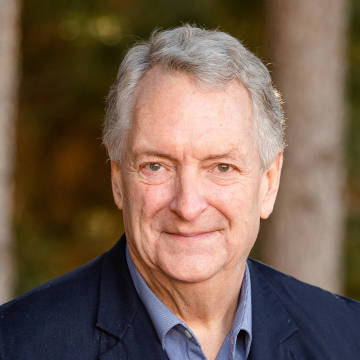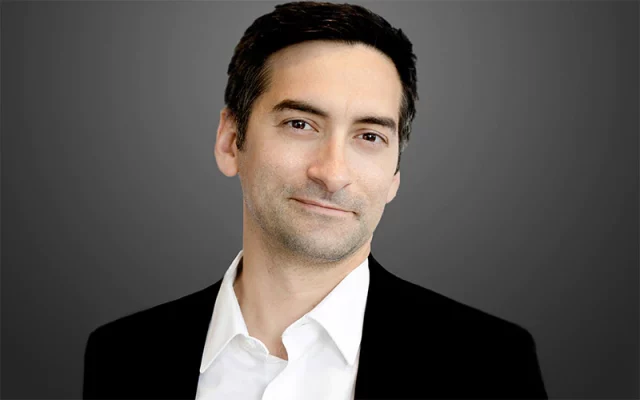Search by Title/Topic (min. 2 characters)
Dates are displayed in the event time zone (America/PST)
Three-Day Overview
The 2022 Profiting from Thought Leadership conference will feature presentations and demonstrations on thought leadership best practices on Day 1 (Wednesday) and Day 2 (Thursday):
- Day 1: Devising effective thought leadership strategy; conducting ground-breaking thought leadership research; and shaping a company culture of thought leadership. [Dana Ballroom 1-3]
- Day 2: Thought leadership marketing; thought leadership selling; thought leadership presentation (online and offline in magazines, articles, podcasts, books, events, interactive graphics, etc.); and thought leadership scaling to service offerings. [Dana Ballroom 1-3]
Day 3 (Friday) features training sessions that reveal how the best practices discussed on Days 1 and 2 can be put into immediate use. Training sessions will cover: primary research design; campaign planning and marketing/sales mix; narrative development; and data visualization best practices. [Capistrano Room]
Changing the Market Conversation Begins with a Problem Ownership Strategy
A B2B firm’s desire to alter conventional thinking and attract innovation-hungry customers won’t be satisfied by haphazard and superficial thought leadership activities. This session will explain the strategic elements behind thought leadership programs that generate mind and market share. This starts by determining what client problems their firm must own, and as importantly, not own.
IBM’s Groundbreaking C-Suite Research on Thought Leadership’s Huge Returns
For two decades, the IBM Institute for Business Value has served as the thought leadership engine for IBM. What inspires this thought leadership team is producing research-backed, technology-informed insights that help leaders make smarter business decisions. Each year, IBV conducts extensive thought leadership research surveying and interviewing thousands of executives and synthesizing their perspectives into more than 100 reports, including the annual C-suite series. Most recently, they turned the research lens on their own thought leadership practice, interviewing nearly 4,000 executives (50% CEOs) who lead large companies (average revenue: $30 billion) in 16 countries, which comprise 74% of global economic activity. Among other stunning results, they discovered that compelling thought leadership can successfully influence technology and services buying decisions for individual organizations in the tens of millions of dollars, and that dollar for dollar, thought leadership delivers the highest returns of any long-term marketing investment – 16 times more than the average marketing campaign. Two IBV executives — Cindy Anderson, who looks after getting IBV’s insights into the marketplace, and Anthony Marshall, who leads the 60-person research center — will discuss this ground-breaking research.
Networking Break
How Two Very Different Firms See Their Opportunities: Consulting Giant McKinsey and Investment Startup Tercera
From our research on 163 B2B firms this year, their biggest thought leadership marketing challenge was a strategy problem: which initiatives to fully get behind – or not. In this session, Jason Mlicki will interview two firms on the opposite ends of the B2B spectrum: consulting powerhouse McKinsey and investment startup Tercera. Raju Narisetti of McKinsey and Michelle Swan of Tercera will discuss how their firms choose their opportunities. Their approaches will apply to any size and type of B2B firm.
Workshop: How to Begin Building Your Firm’s Thought Leadership Culture
Following the presentation, we will break into groups and discuss how organizations can purposefully create, sustain, and extend a culture of thought leadership that aligns with and advances business objectives. We will look at the importance of thought leadership culture from a positioning perspective (i.e., through the hearts, minds, and pocketbooks of customers); the impediments and negative consequences of not having a thought leadership culture; and the organizational elements (human and structural) required to ignite and propel a thought leadership culture forward.
Riding the Next Wave of Thought Leadership Research
The number of authoritative voices on any B2B topic seems to grow geometrically by the month. To consistently create big ideas, B2B firms must conduct thought leadership research differently than they have in the past. Binayak Choudhury and Bob Buday will lay out at a high level where they see such research going: deeper and narrower studies designed to build upon each other; connecting the dots across such studies to produce bigger findings; and mastery of online quantitative and qualitative data gathering to discover best practices that no one else has found.
Networking Lunch
Laguna Brick Patio
Networking Break
Networking Breakfast
Greeting and Overview
[All seminar sessions are in the Dana Ballroom I-3]
Cocktails, Book Signing and Dinner
Laguna Brick Patio
Join us for cocktails and a festive buffet dinner at sunset. Bring your copy of Competing on Thought Leadership for Bob to sign.
Research Methods That Spawn Blockbuster Ideas
The biggest ideas of the last 30 years came from in-depth research that unearthed unprecedented insights about what distinguished the best companies at solving a particularly troublesome market issue. Tom Davenport has led research on two of the world’s biggest management concepts, both of which accelerated the adoption of the technologies that enabled them: “business reengineering” and “competing on analytics.” In this session, he will explain his research methods and those behind other big management concepts that fueled widespread technology adoption.
Building and Sustaining a Culture of Thought Leadership
Leaders from three companies — two from management consulting, the other from IT services – share what they have learned, experienced, and plan as next steps in constructing, nurturing, and extending a culture of thought leadership. Hear firsthand what it takes to create an environment where everyone – from administrative staff and functional leaders, through subject matter experts and C-suite execs – works in lockstep to reveal expertise and enhance eminence for the entire company. Samad Masood, Content Strategy Lead for the Infosys Knowledge Institute, will share “anecdotes from the coal face” on how his research institute continually communicates to senior leadership the critical importance of thought leadership to the firm’s future success. Tim Reason, Deputy Editor and VP at Bain & Company, and Lucia Rahilly, Global Editorial Director & Deputy Publisher at McKinsey & Company, will explain how their firms’ deeply embedded cultures of research and knowledge-sharing drive differentiated thinking and advance business objectives.
How to Build a Culture of Thought Leadership
Even the best-funded investments in thought leadership won’t go far if a company’s culture doesn’t reward bold new ideas, value the deep study and understanding of customer challenges, and realize the best solutions may not always come from within. University of Michigan business professor Dave Ulrich is globally recognized as an expert on corporate culture and people issues in organizations. In this presentation, he and Alan Alper of Buday TLP will discuss the ingredients necessary in creating and sustaining a culture of thought leadership.
How Accenture, Boston Consulting Group and Salesforce Conduct Groundbreaking Research
Thought leadership research professionals at three big-idea companies will explain how their firms choose topics, get clients and other companies to share their practices, gather data, create insights, get their firms to adopt them, and bring them to market.
Why Every Business-to-Business Company Now Competes on Thought Leadership
Management consulting, research, investment banking and training firms once largely stood alone as B2B companies that regularly published their ideas to reframe market perceptions. Now every B2B sector has jumped into the fray: IT services, software, venture capital, private equity, accounting, medical equipment, automotive components, temporary help and more. In this session, Bob Buday will draw on a new research study and his 35 years in thought leadership to explain why companies across B2B sectors are striving to been seen as experts in their domains, and why their customers increasingly demand it.
Panel Discussion: The Next Wave of Digital Publishing
The digital wave of publishing has washed over most B2B segments, but most organizations still struggle to master the new tools and techniques of modern storytelling. This session will get down and dirty and offer a frontline view of how short-form content can be assembled to create more dynamic and captivating ways of sharing your organization’s best and brightest PoVs. These pieces – which typically consist of HTML (dynamic or static) with embedded motion graphics, interactive graphics, and animations – can be built to set up deeper-dive insights delivered in primary research reports or white papers, or extend expertise shared in more traditional media formats (PDFs) with visualizations that reinforce your organization’s secret sauce.
Inside McKinsey’s Publishing Powerhouse
In this session, McKinsey & Co.’s Raju Narisetti and Lucia Rahilly will discuss how the world’s leading management consultant applies its heritage of thought leadership to create a constant stream of differentiating content that explains the firm’s knowledge and expertise in helping proprietary clients solve their most pressing business challenges. They will also cover how the McKinsey publishing team works with subject matter experts to extract best and brightest insights; the importance of monitoring and measuring content performance to inform future content strategy decisions; and how the company is adapting to the changing face of thought leadership content creation from its historical focus on long-form articles and reports, to today’s obsession with shorter form pieces such as “chart-ciles,” animations, and videos.
Networking Break (30 Minutes)
Thought Leadership Marketing Panel Discussion: Esri, Tercera and Gensler
In this panel discussion, we’ll bring back Jeff Brazil, Michelle Swan and Sam Martin to talk about key thought leadership marketing challenges. They will discuss how to keep all marketing disciplines rowing in the same direction from a timing and prioritization perspective; how to keep lines of engagement honest and focused on top goals and messages; and the need to think in terms of intended outcomes so marketing campaigns achieve their goals.
Thought Leadership Marketing Case Study No. 3: How Gensler (America’s Largest Architecture Firm) Has Been Using Thought Leadership to Grow During the Pandemic
Gensler is a global architecture, design and planning firm. It is by far the largest architecture firm in the U.S. (revenue of $1.3 billion, according to trade publication Architectural Record). Since the pandemic began in 2020, Global Director of Marketing & Communications Leslie Taylor, Global Editorial Director Sam Martin and the rest of the Gensler marketing team have used thought leadership to power up the firm’s global presence. Sam will talk about Gensler’s innovative marketing, publications and research programs.
Thought Leadership Marketing Case Study No. 2: Establishing Startup Investment Firm Tercera as an Expert in Cloud Tech Services
In this session, Michelle Swan, a partner at investment firm Tercera, will discuss the role marketing plays in getting her company’s thought leadership heard amid the cacophony of other private equity and venture capital firms focused on the cloud services space. She will also share how Tercera advises portfolio companies on the best ways to articulate their intellectual capital and value propositions to clients and prospects in the markets they service. Lastly, Michelle will explain how Tercera articulates its key messages (people over products, cloud’s third wave, and The Tercera 30 partner ecosystem report) and elevates the firm in the eyes of investors and portfolio companies.
Greeting and Overview
Cocktails
Capistrano Terrace
Join us for drinks and hors d’oeuvres.
Competing on Thought Leadership: Putting It All Together
Networking Lunch
Laguna Brick Patio
Networking Break
Networking Breakfast
Innovation in Thought Leadership Podcasting
Podcasting may not be a novel concept to modern consumers of digital content, but for B2B firms it’s a whole new way of sharing knowledge and conveying their problem-solving expertise. This session highlights the successful strategies of three pioneering podcasters with different origins, strategies, and targets. Our august panel consists of Mia Lobel, Head of Content at Pushkin Industries, who oversees the “Against the Rules” podcast series of Michael Lewis (NY Times’ bestselling author of “Moneyball,” “The Big Short,” “Liar’s Poker,” and “The Premonition”); Scott Miller, former CMO and EVP of Thought Leadership at Franklin Covey, who stars in “On Leadership,” the long-running and highly popular podcast series of the global leadership development company; and Rob Litterst, who oversees the podcast series “The Daily Hustle” of HubSpot, the $1.3 billion revenue Internet marketing software firm. Collectively, these podcasting pioneers have reached the pinnacle of the podcasting game by producing timely and relevant series infused with compelling storytelling and high production values that clearly, concisely, and coherently connect with their targets. Our experts will speak to the virtues and vices of podcasting, the mechanics of creating and sustaining a winning podcast series, and the ways and means of being heard above the din in the crowded and quickly accelerating podcasting marketplace. This session is must-see for organizations that are contemplating podcasting and others that want to reinvigorate their existing podcasts.
Getting Thought Leadership Marketers, Researchers and Salespeople on the Same Page
For decades, thought leadership research, marketing and sales functions have tolerated highly dysfunctional relationships. But in today’s post-pandemic, never-normal world, this dynamic will blow up the best research, the best marketing, and the best sales effort. Why? Because that dysfunction results in an inherent failure in the last mile of a buying customer’s journey, if not sooner. Within that last mile, sellers try to tie together all the internal capability to guide buyers through their next best actions. In addition, sellers must do it in a way that helps buyers make sense of the information deluge, supports a confident buying decision and enriches the overall buying experience. Maria Boulden, VP and Executive Partner of Gartner’s Chief Sales Officer community, will show why companies that don’t help their salespeople use thought leadership to turn chaos into coherence for the buyer are part of the problem. They increase the burden on their sellers, confuse their buyers, and ultimately delay or kill the sale. However, she believes this is not a hard problem to fix – even though the dysfunctions among thought leadership research, marketing and sales groups have grown enormously. Maria will lay out concrete steps every B2B company can take to manifest thought leadership in that last mile: the sales interface.
How Data Visualization Changes the Thought Leadership Publishing Game
Bill Shander is one of the pioneers of data visualization for thought leadership content. For the last decade, he has been a leading light on how to optimally use such online tools as scrolly-telling, interactive charts that give each viewer just the data they need, animation, videos, and other digital techniques to turn storytelling into a new art. In this session, Bill will explain how data visualization and other online tools are fundamentally changing the way thought leadership narratives can be told. He will illustrate this with his client work and other best-practice examples.
Scaling Up a Thought Leadership Engine From Scratch: Adecco’s Story
For companies just getting into the thought leadership game, creating a program that quickly scales and delivers business value can be daunting. Mara Stefan will walk through how she built her program from the ground up at the $25 billion global company. Mara will explain how she assembled an editorial team, created the firm’s first digital magazine, and built out a thought leadership agenda that was successfully delivered last May at the World Economic Forum’s Annual Meeting in Davos.
Turning Tech Firms Into Thought Leaders
Tech firms are among the savviest and most visionary organizations on the face of the earth. However, many are challenged to codify and share their best and brightest thought leadership at the right place and time — in a language that is understandable and contextually relevant. Author and PR veteran Sabrina Horn has counseled tech industry leaders for 30-plus years on the most effective ways of unlocking and channeling their expertise and knowledge to targets who are easily overwhelmed by a cacophony of complex and confusing messages. In this session, Sabrina will share her advice for current and would-be tech industry thought leaders and their muses. The bottom line: if tech companies and their subject matter experts want to be seen as partners of choice, they need to reveal their unique business-challenge solving capabilities with authenticity, honesty, and a good deal of empathy. Only then, will their unique PoVs be taken seriously by all influencers – clients, prospects, the media, and the analyst community.
How Deloitte is Taking an ‘Outside-in’ Approach to Thought Leadership
Professional services firms have access to some of the world’s most knowledgeable experts, but often that has led to an “inside-out” approach to thought leadership, one that is driven more by internal considerations than by serving the reader. Consulting and accounting giant Deloitte is in the process of changing that paradigm. In this session, Jeff Pundyk will explain what he calls Deloitte’s “outside-in” approach to publishing. It’s one in which the firm has undertaken deep research with readers (surveys, interviews, usability testing, etc.) to understand how they use thought leadership content and what they need from it to gain even greater value. Jeff will also explain why Deloitte is looking much more deeply at what leading business publications do online (Financial Times, The Economist, Harvard Business Review, Wall Street Journal, Fortune, Forbes, etc.) and much less at what the other “Big Four” accounting and consulting firms are doing.
How Venture Firm Kleiner Perkins Created a Wall Street Journal Bestseller “Speed + Scale”
Already among the most successful early-stage venture capital firms in Silicon Valley, Kleiner Perkins has now established itself as a transformative thought leader in the environmental sustainability space. Chairman John Doerr’s recently published book Speed & Scale lays out a practical action plan for solving the world’s climate crisis before it is too late. To capture timely and relevant anecdotes from legends such as Al Gore, Bill Gates, and Jeff Bezos — as well as plethora of environmentally conscious entrepreneurs — Doerr turned to an expert storyteller, Evan Schwartz, the former chief storyteller at innovation consulting powerhouse Innosight. Evan injected facts, figures, and case examples to Doerr’s narrative to drive home what it will take to build a sustainable carbon-neutral world. In this session, Evan will share how Speed & Scale was crafted, from the rigorous research, to the writing, design, and packaging required to create a high-impact Wall Street Journal bestseller.
Thought Leadership in the Wild World of Digital Publishing
From our new research on thought leadership, Alan Alper will report on how B2B companies are taking their ideas to market – beyond the written word. What are the trends in digital content? How do podcasts, videos, information graphics, and data visualizations fit into the thought leadership mix? How important are conferences – in-person and virtual? This session will set up subsequent sessions that explore how leading companies present their expertise in an array of digital formats.
Thought Leadership Marketing Case Study No. 1: Putting Esri on the Global Map
Launched by Jack Dangermond and his wife Laura in 1969 in their hometown of Redlands, Calif., on $1,500 in savings, Esri has since become the global market leader in geographic information software (GIS), and the sixth largest privately held software company. Today, with revenue of “a few billion dollars” globally and $1.5 billion in the U.S. (as Jack told a Fortune magazine podcast in 2021), Esri has 4,000+ employees in 73 countries who work on behalf of more than 300,000 customers worldwide, including 90% of the Fortune 100. Jeff Brazil is head of content and brand at Esri. Over the last six years, he and Chief Marketing Officer Marianna Kantor have helped the firm become better known for its leading products and services in geographic information software, location intelligence, and mapping. They and the other members of the marketing team have increased Esri’s brand recognition fourfold, in part by launching a vibrant online thought leadership magazine (WhereNext), blogs, podcasts and other channels that have attracted hundreds of thousands of new prospects.
Marketing and Selling Thought Leadership Effectively in a Noisy Digital World
With enormous competition online for executive mindshare, it has become extremely difficult for companies to attract buyers to their expertise. Jason Mlicki will explain from his client work the new realities of marketing and selling expertise, as well as the latest findings from our 2022 research on B2B thought leadership practices.
Creating and Generating Demand for the Big Idea
A Unique PTL Training Experience for the Entire Thought Leadership Team
The need: For decades, a blockbuster idea and persuasive marketing of it have been the great equalizer between small and large B2B companies. In consulting, small firms such as Innosight (“disruptive innovation”) and CSC Index (“business reengineering”) carved out lucrative niches. The same dynamic has played out in tech (Salesforce.com and cloud-based CRM software), venture capital (Andreessen Horowitz’ “Software is eating the world”), the corporate training industry (Stephen Covey’s “7 Habits of Highly Successful People”), and the legal sector (Wachtell Lipton’s “poison pill” takeover defense).
However, our new survey of 5,800 executives who use thought leadership to evaluate B2B firms found only 23% view the content as extremely valuable. We’ve designed this course to help solve that problem.
The training: Day 3 is for companies — small, midsize and large — that want to compete on thought leadership but lack the skills and knowledge to do so. Four experts in key aspects of thought leadership — Bob Buday, Alan Alper, Bill Shander and Jason Mlicki — will help you and your team develop the core skills for creating big ideas and generating robust demand for them. They will teach our training participants four skills:
- Thought leadership research design: You’ll learn how to scope a topic that is researchable; define the sub-topics to explore (and not explore); formulate the initial hypotheses that will help you create the right questions (for surveys, case study interviews, desk research); conduct the research; and identify what the best companies do differently than the rest (which is where you will uncover the biggest insights). Bob Buday, CEO of Buday TLP, will lead this training.
- Narrative structure: Creating an irrefutable argument about the best practices in solving a business problem, using a narrative structure the target audience can easily grasp: the 6-part argument structure for conveying powerful TL narratives described in the bestselling book, “Competing on Thought Leadership.” (Alan Alper, COO, Buday TLP)
- Data visualization and storytelling: Using data, online visuals, and interactive graphics to create a truly memorable narrative – one far more illuminating than prose and static graphics alone can deliver. You’ll learn the core techniques for explaining the narrative you’ve written by coming up with ideas for interactive graphics, interactive charts, “scrollytelling,” and other techniques. (Bill Shander, president of Beehive Media)
- The thought leadership marketing and sales campaign mix: Creating demand for a blockbuster concept and delivering a steady stream of prospects to salespeople who can convert prospects into paying clients. You’ll devise a marketing and sales campaign strategy to attract a big audience to an irresistible concept. (Jason Mlicki, principal, Rattleback)
Our training’s secret sauce: We will teach class participants through carefully crafted exercises how to design, structure, visualize and sell blockbuster thought leadership ideas by showing how this would work on a single topic. We will bring a topic that all participants can work with – i.e., not a topic that is well-known to some class participants but unfamiliar to others.
The value of the training: You will begin to master the valuable but rare skills of creating and marketing big ideas that generate significant market interest.
The audience: This is a training opportunity that marketing, editorial, research and other thought leadership professionals across B2B sectors shouldn’t miss.




























